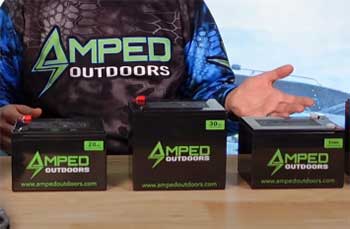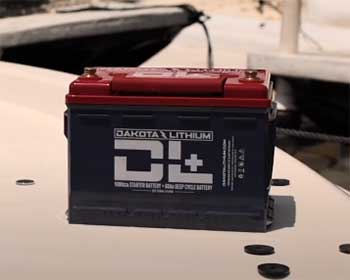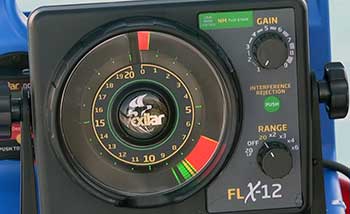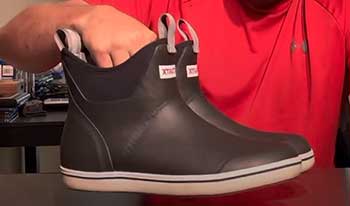While it’s better to have a variety of batteries to choose from, weighing them all is another task on its own. Amped outdoors and Dakota lithium batteries have lots of different factors.
The main difference between the two is that Amped outdoors lasts between 6 and 80Ah, whereas Dakota lithium ranges between 10 and 100Ah. The warranty period for Dakota is eleven years, while for Amped outdoors, it’s two to five years.
And that’s just the thin end of the wedge. There are more contrasting features between the two power units. So, don’t move an inch!
A Quick Comparison Table
| Product Specifications | Amped Outdoors | Dakota Lithium |
| Nominal Capacity | 6-80Ah | 10-100Ah |
| Warranty | 2 to 5 years | 11 years |
| Operating Temperature | -4F, 140F | -20F, 120F |
| Lifespan | Five years | Ten years |
| Performance | Moderate | Excellent |
| Price | Lower | Higher |
| Nominal Voltage | 12V | 12.8V |
In-depth Differences Between Amped Outdoors And Dakota Lithium
- Nominal Capacity

The nominal capacity is the main significant difference between the two batteries.
Amped outdoors have an ability of 6-80Ah. Oppositely, Dakota lithium ranges from 10-100Ah.
The battery with more ampere hours can provide energy for extended periods before reaching the cut-off voltage.
You can use this factor to decide between the two.
If you need a battery with a larger capacity, Dakota lithium should be your pick without hesitation.
Also Read: Differences Between Norsk And Dakota Lithium Battery.
- Warranty
Warranty is one critical factor most of us consider when buying a product. We want to be able to enjoy an item we just bought worry-free. Amped outdoor comes with a two-year warranty upon the date of purchase that can be extended up to five years.
In contrast, Dakota lithium batteries offer a full eleven-year warranty. How unbelievable is that? The manufacturer will replace or repair it within that period if the need arises.
Dakota is the best in class when it comes to the warranty aspect. Therefore, if you want a battery with a more extended warranty period, go for Dakota lithium.
- Operating Temperature
Another factor you can consider when getting a new battery is the operating temperature. For Amped outdoors, the most convenient temperature is between -4F and 140F.
On the other hand, the working temperature for the Dakota lithium lies between -20F and 120F. The freezing temperatures might cause damage to this battery.
It boils down to your individual needs. Suppose you want a battery that can work excellently in cold temperatures without inconvenience; Amped outdoor is a perfect choice.
- Lifespan
There is this popular notion that that cheap is expensive. In other words, if you buy an affordable item, likely, it won’t serve you for long, and vice versa. But this is not always the case; don’t forget that.
Amped outdoors have a lifespan of five years. On the flip side, Dakota lithium has a longevity period of ten years. Both of these batteries will serve you for a reasonable amount of time.
Nevertheless, if you prefer one with a longer lifespan, then Dakota lithium should be more than enough.
- Performance

The truth of the matter is in regards to performance, Dakota lithium is way ahead of Amped outdoors, and this is why.
For starters, the charging speed is five times faster than most batteries.
In addition, this battery provides maximum energy versatility and efficiency.
Last but not least, it’s safe for the environment.
I highly recommend Dakota lithium if you want the absolute best out of your battery.
- Price
Do you look at price over quality or the other way around? The good news is that you can get a good battery that serves the purpose even at a lower price.
Amped outdoors are more affordable as compared to Dakota lithium. The lowest price you can find for the latter is $82. Conversely, you can purchase Amped for as low as $54.
If you want a battery with better performance and quality despite the high price, you can go with Dakota. But if you’re not planning on spending much, worry not; Amped outdoor has your back.
- Nominal Voltage
The nominal voltage between these two batteries varies slightly. For Amped outdoors, it’s approximately 12V. Inversely, Dakota lithium has a voltage of roughly 12.8V.
One significant advantage of a higher voltage is that it works excellently when powering large devices. Even better, the higher the voltage, the lower the power lost as electricity is transmitted from one point to another.
On the other hand, a lower voltage works better on small devices. You should choose the Dakota lithium instead if you prefer a battery with a higher nominal voltage.
Which Battery Is Better For You?
There is no right or wrong answer to this question.
Why?
Your personal needs determine which one will be the perfect fit. First, pick Amped outdoors without a backward glance if you want a less pricey battery that can work ideally even in extreme temperatures. It would also work best on small-scale devices.
However, if you want a higher voltage, lifespan, nominal capacity, and superb performance, the Dakota lithium will satisfy all your needs without fail.
Also Read: Sun Dolphin American 12 Or Pelican Intruder 12 Fishing Boat?
Frequently Asked Questions (FAQ)
Panasonic CR123A is the best brand of all lithium batteries due to its high energy utilization, durability, quality, current-discharge ability, and environment-friendliness.
According to statistics, Battle Born 100Ah LifePO4 12V deep cycle is the highest-rated lithium RV battery.
Amped outdoor batteries are made in Hudson, Wisconsin, around Eastern Minnesota.
Battle Born 100Ah LifePO4 is on the front line in manufacturing the best and most efficient 12V lithium batteries.
Final Verdict
Wrapping up the Amped outdoors vs. Dakota lithium analysis, it’s safe to say that Dakota lithium outweighs Amped in terms of performance, lifespan, warranty period, and nominal capacity.
Amped outdoors is also not left behind. You might need a good battery at a lower purchase cost, but you don’t know where to start. I’m here to tell you that you can get Amped at a pocket-friendly price.
Moreover, it works magnificently on tiny machines.

